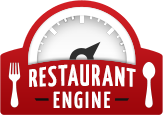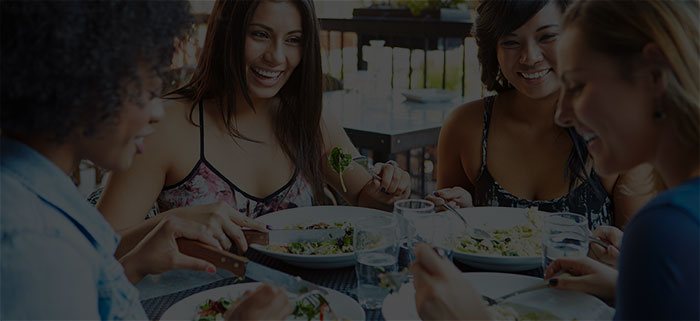Finance Tip – How to Calculate Your Restaurant Prime Cost

Prime cost is a key performance indicator.
Did you know that your prime cost is one of the most important numbers you need to know?
It’s what helps you control losses and improve your returns. If you don’t know your prime number, you end up with uncontrolled food, beverage, and labor costs that eventually signal the end of your restaurant.
Because waste, spoiled food, theft, and over-staffing can cause huge problems for your restaurant, it pays to be on top of your prime cost at all times. (tweet this)
Let’s look at our finance tip and how to calculate your restaurant prime cost.
What is Prime Cost?
First, let’s define this term.
Prime cost is key to your restaurant. It’s the grand total of your total costs of goods sold (including food and liquor costs) and your total labor cost.
How to Calculate Prime Cost
In order to calculate your total costs of goods sold, you start with your beginning inventory, add it to your total purchase for the period (for example, one month), then subtract it from your ending inventory.
This gives you the total cost of everything you sold that month.
When it comes to total labor cost, that includes your employees’ wages, their total taxes, benefits, and any insurance you pay.
You don’t want to stop here, though. You have more equation to work to get the actual percentage by comparing your prime cost to total sales. It looks like this:
Prime Cost divided by Total Sales = Prime Cost as a Percentage of Your Sales
Prime Cost Example
It helps to actually plug some numbers into these formulas to better understand your prime cost.
In this example, we look at costs for one month. Here are the steps:
Print a report of your total cost of goods. You find that it’s $50,000.
- Print a report of your total labor costs plus taxes, insurance, etc. You find that it’s $5,000.
- Next, use the equation above.
Total cost of goods + total labor cost = Prime Cost
$50,000 + $5,000 = $55,000
Prime cost = $55,000
That was pretty easy because you’re only adding the two expenses together. If you aren’t sure where to find these numbers, check with your accountant.
Now it’s time to figure your prime cost as an overall percentage of your sales.
- Look at your sales report and find your total sales for the month. You find they are $100,000.
- Next, use the second equation from above.
Prime Cost divided by Total Sales = Prime Cost as a Percentage of Your Sales.
Prime cost = $55,000
Total Sales = $100,000
$55,000/$100,000 = 55%
Your prime cost as a percentage of your sales is 55%.

A weekly review of your restaurant prime cost is recommended.
What is the Ideal Restaurant Prime Cost?
The new ideal prime cost in the 21st century is 55%. That may sound daunting to many restaurant owners, but it is possible.
Many experts recommend a 55% prime cost because that leaves you with 45% of your sales to cover your operating costs and turn a profit.
For the best success and a better prime cost, you want higher sales coupled with a lower cost of goods and labor. So, a prime cost between 55-60% is a realistic goal for many restaurants. (tweet this)
It’s not a recipe for success if you fall below the 50% range because it might mean several unsavory things:
- Your food costs are too high.
- The quality of your food is bad.
- You may be overcharging your customer.
- It could be that you are over-staffing and overworking your team.
If your prime cost goes above 70%, it can be next to impossible to be profitable because what is left over is going to expenses. There is nothing left for profits.
The Importance of Monitoring Your Prime Cost
Best practices say you should calculate your prime costs weekly. You also want to look at year-to-date, so you have a big picture view.
There are several important reasons to monitor your prime cost on a very regular basis.
First, these are your largest expenses – your total cost of goods and your labor. Without either of these, you have no restaurant.
Second, prime costs fluctuate. Food and labor costs change by the seasons and for a number of reasons. Because no month is exactly the same, you need to monitor prime cost, so you aren’t surprised and unable to recover.
Third, monitor your prime cost so you can control it. For example, if it’s the off-season, you can reduce your labor costs by staffing shifts with less people. You might also find that your food costs increase. In which case, you can switch suppliers or shop elsewhere.
Next, you want to know your prime cost because your entire restaurant is at stake. Your prime cost affects everything from your menu prices, inventory control, hiring, staff scheduling, marketing budget, and much more.
In addition, by monitoring it, you can create a better menu with prices based on your prime cost. Highlight your most profitable menu items, lower the cost of your ingredients, and slightly raise your prices for better success.
Finally, monitor your prime cost so you understand at all times how profitable your restaurant is. For example, you may have a bad week that gets made up in the next two weeks.
By monitoring your prime cost, you know what your profit margin is, and you can make adjustments as necessary.
Final Thoughts
Restaurant owners and managers need to stay on top of their prime cost. It’s one of your most valuable key performance indicators and can help you see where you can improve.
It’s vital that you know this number if you want to grow and scale your restaurant. You’ll find that running a successful restaurant is a fine line between concentrating on increasing sales and trying to keep costs low.
When you know the difference between the two, you have a successful restaurant. Knowing your prime cost and staying updated on it is how to decipher the difference and propel your restaurant forward.
Finally, to really capitalize on your restaurant prime cost, look to an accounting expert for help. You also want to be on an accrual accounting system.
At Restaurant Engine, not only do we create great, responsive websites, but you can count on us to create a website that drives business to all your restaurants and edges you above the competition by using mobile-friendly design with a terrific user experience. Ready to take the plunge and create a website with an online menu, blog and beautiful photos? Get your free website consultation today!
Images: Ibrahim Rifath and William Iven on Unsplash


Leave a Reply